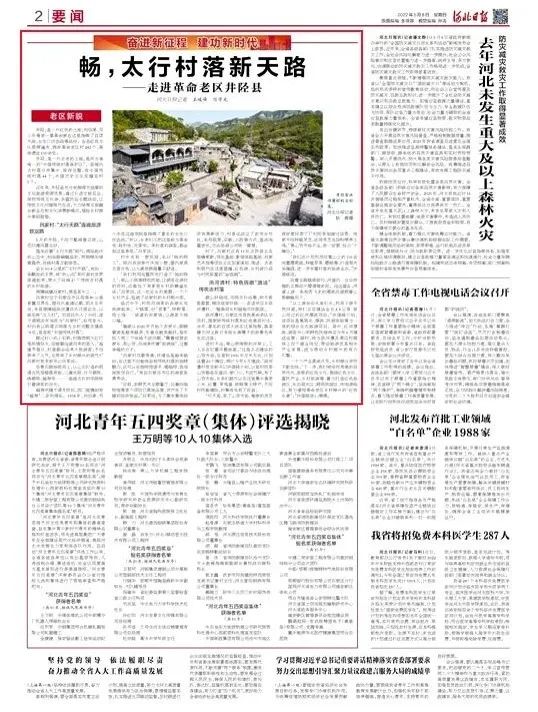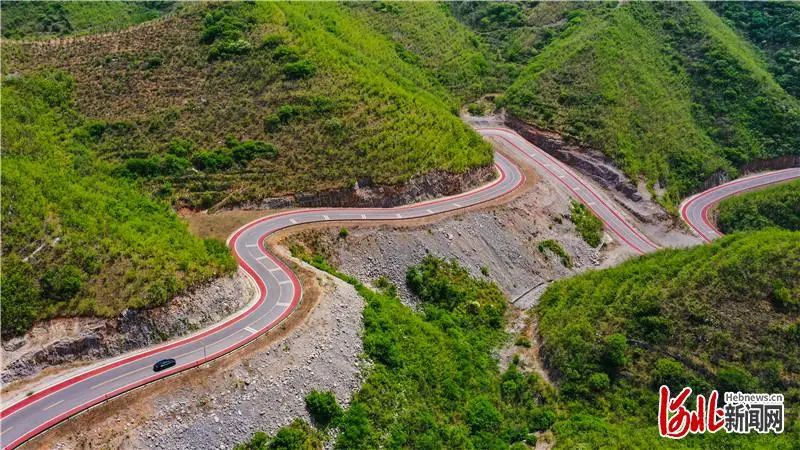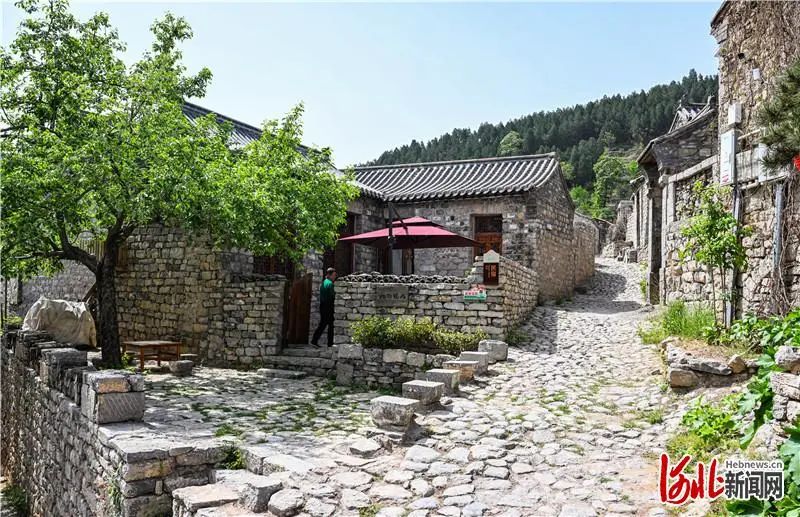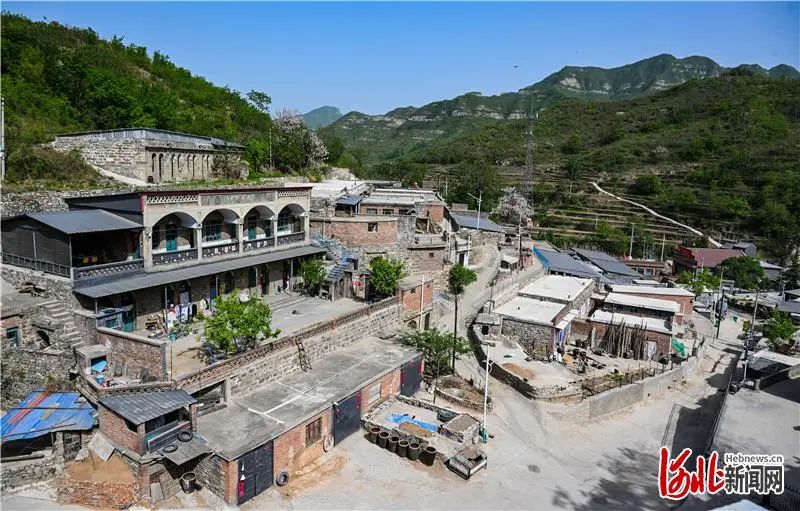Entering Jingzheng County, Hebei Daily Interview Troupe
Author:Inoue Publishing Time:2022.06.17


Chang, Taihang Village Xintian Road
——Entering Jingzheng County, revolutionary old district
Hebei Daily reporter Wang Junfeng Ren Xueguang

Ancient villages in Honghecao Village, Jingxian County. Photo by Hebei Daily reporter Geng Hui
Jing Yan is a red land. Liu Bocheng and Deng Xiaoping's older generation revolutionary have commanded the battle of hundreds of regiments and ambush warfare in Changshengkou. The county's red cultural resources are spread all over, with 242 old revolutionary villages and more than 100 revolutionary sites.
Jingyu is an ancient land and the only "traditional Chinese village reserve" in Hebei Province. The ancient villages in the county are concentrated and well -preserved. There are 44 traditional Chinese villages and 5 famous historical and cultural towns.
In recent years, Jingzheng County has made full use of the unique cultural tourism resources advantages. By introducing famous and tourism enterprises, deeply digging traditional cultural IPs, and enriching folk theme activities, traditional culture connects modern life, and vigorously cultivate cultural tourism integration new formats and cultural consumption new new formats and new cultural consumption. Model, depict the beautiful scroll of rural rejuvenation.

The "Taihangtian Road" in Jingzheng County meanders the mountains. Photo by Hebei Daily reporter Geng Hui
Lujiacun: "Taihangtian Road" connects to the road to get rich
In the well in May, the gaps were full of green, and the scenery was just right.
Driving along the "Taihangtian Road", in the rolling mountains, the asphalt road winds and turns, the terraces on both sides are green, and the villages along the line are leisurely.
The 60.4 kilometers of "Taihangtian Road", like a floating jade belt, connects the "poor ravine" with the outside world, and brings fire to 27 traditional ancient villages along the line.
Lujia Village, Nanfang, is one of them.
Lujia Village is located at the junction of Jin and Hebei, 80 kilometers southwest of Shijiazhuang City. According to the Lu family's genealogy, during the Yongle period of the Ming Dynasty, the Honghe Clan of the Nanxuan City in the county moved here to the name "Wanger Village". Later, due to the prosperity of the Lu family, it was changed to "Lujia Village" during the Shunzhi period of the Qing Dynasty, which has been used to this day. There are 76 complete ancient buildings based on the ancient courtyard of the Ming and Qing Dynasties, which are the first batch of "traditional Chinese villages".
Crossing the small stone bridge across the village entrance, the big red lanterns on both sides of the village road were enthusiastic, and the guests came from afar. "Every holiday, a large number of tourists in the village will not only bring popularity, but also the confidence of rural revitalization!" Said Lu Jun, secretary of the party branch of Lujia Village.
Picking up along Qingshi Road, the ancient houses of the Ming and Qing dynasties created by mountains and rocks are staggered. Three drops of water courtyard, sun and moon tower courtyard, embroidered tower courtyard, Fushou house ... The quaint houses attracted the attention of tourists.
Fushou house was built in the late Qing Dynasty and early Republic of China. In 1938, Liu Bocheng and Deng Xiaoping commanded the famous Changshengkou ambush in this house. "So, the folks call here as the revolutionary house, the victory house, and the glorious house. The tourists from the village will visit here." Lu Jun said.
There is a homestay in the center of the village called "her courtyard". There is a gazebo in the courtyard to rest casually, and the furniture in the house makes people feel warm and comfortable.
"We used idle houses to create special homestays such as 'her courtyard', Guanshan Courtyard, etc., so that tourists can live and enjoy the quiet life of the countryside while playing." The rural industries have painted the rural rejuvenation of Lujia Village.

The home and breakfast, which was rebuilt from the old house in Lujia Village, Jingyi County. Photo by Hebei Daily reporter Geng Hui
Near noon, the villager Lu Runying's farmhouse was also lively. Big pots, fried "bitterness", mixing wild vegetables, stewed chicken ... authentic farm meals make tourists full of mouth.
"Since 2020, the family has been working on farmers. It looks at more and more tourists, and the business is getting better and better. It is not a problem to earn 20,000 yuan per year." Relying on operating farmhouses and selling mountain goods, Lu Runying eats "tourism "Fan", live a happy life.
"Lujia Village is beautiful, and the environment is getting better and better. Here you can not only experience the unique charm of traditional villages, but also read, drink coffee in cafes, and leave themselves leisurely." Said Zhang Yongfang, a tourist from Shijiazhuang City.
"At present, many projects such as farming art theme restaurants, Bai Mo cafes and other projects have been operated and produced good economic benefits." Lu Jun said that in order to stimulate the new vitality of the collective economy, the village has also established the agricultural house cooperative. Leasing, buying off, shares, etc., revitalize the idle old house, and hand over the unified management of tourism companies.
Nowadays, Lujiacun also has 15 ancient residences being repaired and updated. Projects such as sketch bases, film and television experience bases, and Lujia Art Museum are stepping up planning and promotion. Ancient and modern collisions are here, and red tourism and rural tourism have become the "golden rice bowl" for villagers to get rich.

Ancient villages in Honghecao Village, Jingxian County. Photo by Hebei Daily reporter Geng Hui
Honghecao Village: Special B & B "Activate" traditional ancient villages
Surrounded by mountains, the houses are simple and vicissitudes, the trees are lush, and the terraces are surrounded by layers ... Entering Honghecao Village, Xinzhuang Township, a beautiful rural picture can be seen.
Honghe Cao Village, the first batch of demonstration villages in the old revolutionary district of Shijiazhuang City, a national traditional village and a red beautiful village. At that time, the story of the famous hundred groups of war was here, and the story of Marshal Nie Rongzhen's rescue of Japanese orphan Miki Misako also happened here.
Not far from entering the village, workers were busy flat on the river bank on the south side of Nanshan Street. "This is the mountain cargo market, with a total area of about 1,000 square meters. It is planned to set up 20 stalls. It is expected to be completed in June this year." Xu Guodong, secretary of the Party branch of Honghe Village, said that in the past, the villagers sold the mountains. At the door, there is no climate. With the mountain cargo market, folks can focus on sale here for native products such as Xiaomi, sweet potatoes, stupid eggs, and walnuts. Not only the villagers can increase their income, but the village collective also has benefits. "No, with the mountain cargo market, the Ganoderma lucidum must be better sold!" The villager Li Xu took over. Not only did his family grow ganoderma, he also used Ganoderma lucidum as feed to feed the chicken. "When the mountain cargo market opens, I must" seize "a stall."
"We also plan to use 100 acres of idle land on the back of the mountains, plant apples, cherries, etc., create a tourist picking garden, and further enrich the tourism format in the village." Xu Guodong said.
Continue to move along the main road, a excavator on the river is waving a large arm to clean up the mud. Looking from a distance, a drifting river in the upper reaches of the river winding down the mountains.
"Drimage water from the upstream Lianggou Reservoir, and using the natural river channels of the downstream, we are building a red river drift project with a total length of 2.4 kilometers and passing through the mountain." Xu Guodong introduced that the project is a comprehensive ecological tourism integrating tourism, drift, and homestay experience. project. Among them, Honghe Drifting, Visitor Center and specialty homestays will be completed and operated in June this year. At that time, hundreds of employment positions will be provided for Hongheyu and surrounding villages, driving the development of tourism and related industries, and becoming a powerful engine to drive rural revitalization.
The industries and flowers are flowing, and the pace of revitalization of the countryside continues to accelerate. "In the next step, we will rely on the beautiful natural scenery and rich red culture to focus on red culture, rich people's industries, rural tourism, etc., and strive to create a red tourist area, ecological tourist area, special homestay area, leisure shopping area, and strive to write the revolutionary revolution The "red movement" of the rural rejuvenation of the old district. "Xu Guodong was full of confidence.
Source | Hebei Daily
Edit | Han Xiaohong
Email |[email protected]
- END -
(Video) Let Yubei Food Flexible tells the first activity highlights of the Chinese story in the first game
Rizhao Meteorological Observatory issued lightning yellow warning [Ⅲ/heavier]
Rizhao Meteorological Observatory issued a thunderbolt yellow warning signal at 06:05 on June 10, 2022: Thunderbolt activities have appeared in Lanshan District and Donggang District of our city. It i